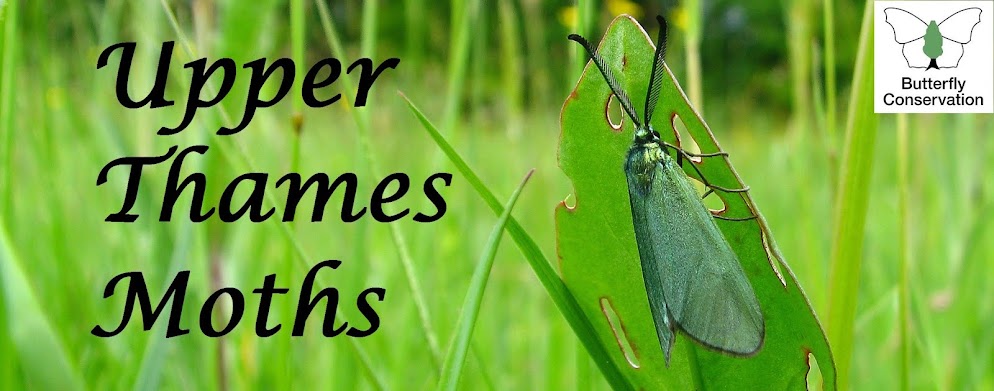 |
| Pancalia leuwenhoekella, Calvert 3rd May |
 |
| Cydia ulicetana, Calvert 3rd May |
Today I took a look along the disused railway cutting to the west of Westcott, Bucks and found several Common Heaths active. Perhaps the most interesting thing there, though, was evidence of Lunar Hornet Moth workings in some old sallows which had been cut down during the winter.
 |
| Common Heath male, Westcott 4th May |
 |
| Lunar Hornet Moth workings, Westcott 4th May |
Back home in the garden at Westcott I found Esperia sulphurella flying around some old logs and Agonopterix arenella, Mompha epilobiella & Emmelina monodactyla were all disturbed from vegetation while mowing the lawn.
Dave Wilton
Westcott, Bucks

Hi Dave, I have this mental picture of you holding the mower with one hand while the other grasps a butterfly net. Is there a trick to catching and identifying day-flying moths?
ReplyDeleteNo trick and no net, although I always have a pot or two with me when working in the garden, "just in case"! Of the three micros disturbed while mowing, all were followed until they landed but only one (the Mompha) needed potting to be sure of its ID.
DeleteAre there any logs with the Lunar Hornet burrows in one end?
ReplyDeleteI believe they burrow up some time before they emerge, so there is a possibility they could emerge from the logs. I think Mick Jones did this some years ago with logs from Dancersend Water Works.
I think there are but they're quite large. Are you going to volunteer to carry them for me the mile or so back to the car?!
DeleteI went back yesterday and bravely struggled home with the smallest log, which by chance happened to be the next section of trunk up from the base shown in my photo above. Log now secured in net cage. Here's hoping I'll be as successful as Mick was!
DeleteTake a big axe, if you've got one, and split them on-site. Hit them the end where the holes are and maybe they will split along the lines of the holes, exposing the caterpillars. At any rate they'd be less heavy to carry when they're split up.
ReplyDeleteAndy.